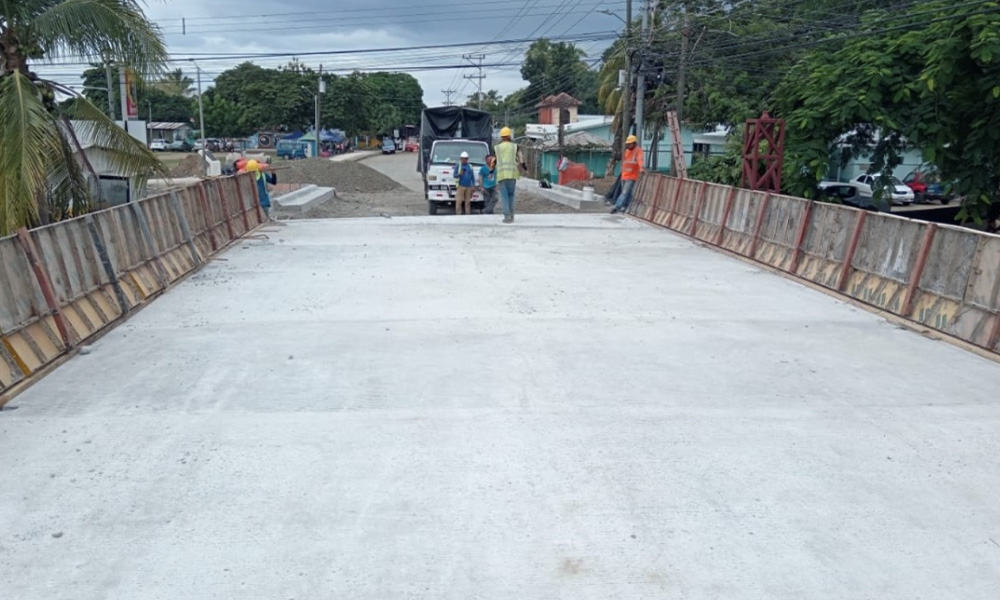Costa Rican authorities have reported 72% completion of a new bridge spanning the Zapote River in the Cabo Velas district of Santa Cruz de Guanacaste along Route 180. The bridge, located in the beach resort town of Brasilito, is expected to be fully operational by early October according to the National Roads Council.
The timeline for opening the $1 million bridge is fortuitous, as it coincides with the start of Guanacaste’s peak tourism season. Both local residents and visitors to the popular beach destination will soon be able to enjoy safer and more efficient travel through the area once the project is finished.
Officials revealed that construction crews are actively working on the bridge’s concrete slab and nearing completion of the sidewalks and curbs. Work is also underway for the concrete rain gutters lining the structure. In total, the new bridge will measure 25 meters long by 10.6 meters wide.
The two-lane bridge will be a major improvement over the existing temporary one-lane crossing. Each of the new lanes will span 3.65 meters wide and include 1.2-meter sidewalks on both sides to improve pedestrian safety, which is critical during the beach town’s busy holiday periods.
The north and south entry points to the bridge will feature asphalt pavement and sidewalks. Area residents anticipate the enhanced connectivity from the wider bridge will make commuting easier for work, medical appointments, schools, and more. Tourism operators also expect the new bridge to provide a boost to Guanacaste’s vital tourism industry.
For pedestrian safety, the bridge sidewalks will have railings on both the outer and inner sides to ensure separation from vehicular traffic. Constructed with reinforced concrete pillars and steel beams, the structure will also incorporate a reinforced concrete bearing slab.
The bridge’s design includes New Jersey-style railings and a divider between the traffic lanes and sidewalks. One major benefit of the new bridge will be relief from the traffic congestion on the existing one-lane crossing, which previously required vehicles to yield for oncoming traffic. This problem was heightened during holidays like Christmas and Easter when visitor numbers spike significantly.







